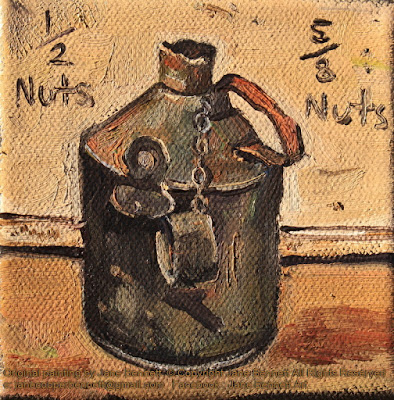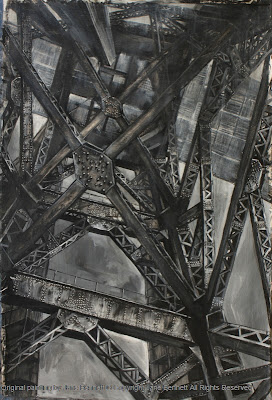I've been asked to exhibit in "Selfie", an exhibition of self portraits by artists who
don't normally specialize in portraiture.
I have painted myself in front of the largest surviving forge remaining in Australia, the Eveleigh Locomotive Workshop
"Selfie" is on display
from 11th - 26th May at 1047 Gallery, 1047 Botany Road Mascot.
Opening
Saturday 11th may 2-5pm, closing drinks 26th May 2-4pm.Open Saturday & Sunday 11 am - 4pm
0401 037 359 ten-forty-seven@mail.com
 |
| Invitation to "Selfie" Exhibition at 1047 Gallery |
 | ||
| E158 'Watching the forge fires fade' 2019 acrylic on canvas 31 x 61cm |
Available for sale
From 1886 until the 1980s, the Blacksmith’s Workshop produced
equipment and parts for manufacturing and maintaining steam
locomotives.
The modern blacksmiths of Eveleigh Works still use traditional
machinery in homage to this bygone era of steam trains and handmade tools.
However, despite their much-loved status as icons of industrial heritage, the
blacksmiths face an uncertain fate as a Woolworths will be built next door.
In the maelstrom of inner city gentrification, blacksmiths are
anachronisms; living fossils from the 19th century.
Much like plein air painters, I suppose.The deep shadows and dramatic lighting of the forge evoke
the evocative, melancholy poetry of nocturnal scenes painted by my heroes Caravaggio,
Joseph Wright of Derby and Georges de la Tour. Their nocturnes are ‘memento mori’
paintings contemplating transience and mortality. The
flickering flame will soon be extinguished.
My canvas is cloaked in darkness, yet a flash of intense
illumination throws eerie green highlights across my face. Behind me the
blacksmith darts gracefully backwards and forwards in his dangerous dance with
fire.
My face looms in the foreground towards the viewer, lost in thought.
My gaze doesn’t meet the viewer directly, but peers intently at something just
out of sight. Am I looking back in nostalgia to the past, or staring warily at an unknown future?
Related posts
Irons in the firePlaying with fire
Macdonaldtown - A Station without a suburb
Strike while the iron is hot
Eveleigh- Industrial Heritage Artist at Work
ATP Open Day - Saturday, 25 Feb 2012
Eveleigh paintings
The village smithy (sydney-eye.blogspot.com)
The slow return from the fire
The fire within
En plein air with street cred (sydney-eye.blogspot.com)






















